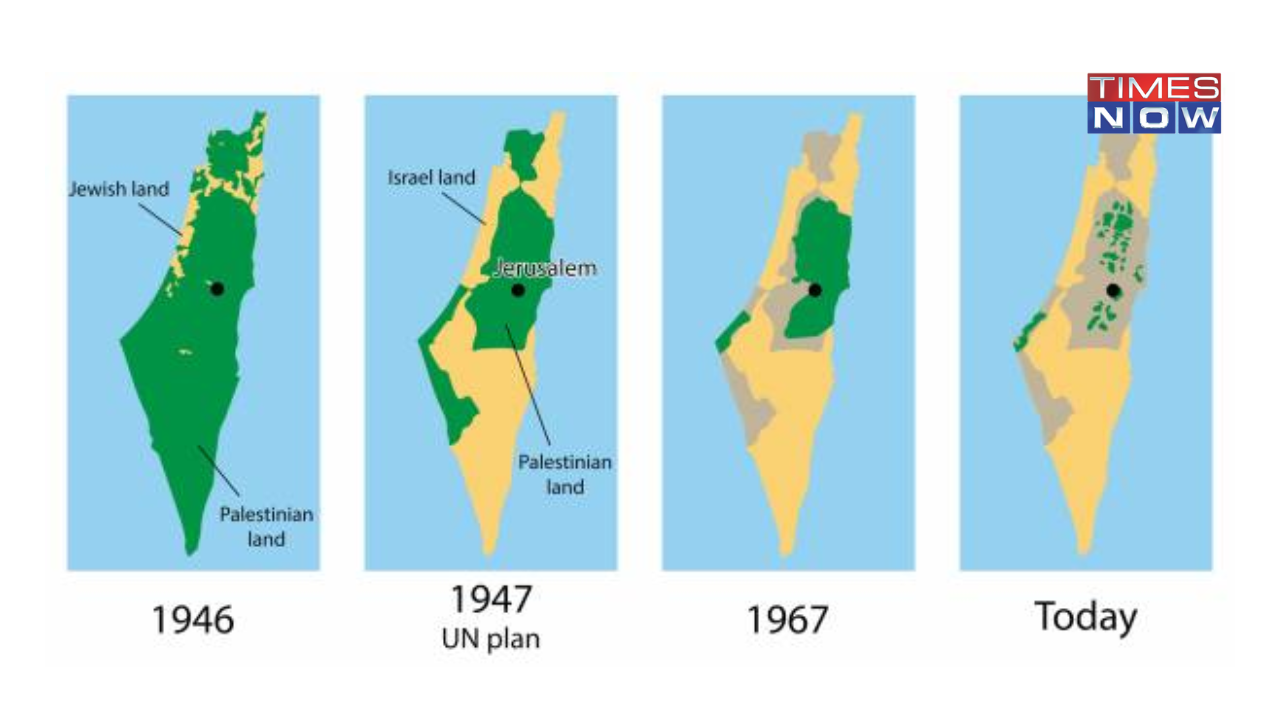What Is The Two-State Solution Proposed for Israel and Palestine | Explained
Amid the mass destruction and loss of life caused by the Israel-Hamas war, countries such as China, India, the US, the Arab League and more have called for Israel and Palestine to adopt the two-state solution and bring an end to this seven-decade-long conflict. Read below to know more about the two-state solution.

What Is The Two State Solution Proposed for Israel and Palestine | Explained
Photo : iStock
Jerusalem: 50 days of the Israel-Hamas war reflected the deeper conflict between Israel and Palestine. With an extension in the truce between Israel and Hamas , countries across the world are once again calling for the two-state solution between the two.
Amid the mass destruction and loss of life caused by the Israel-Hamas war, countries such as China, India, the US, the Arab League and more have called for Israel and Palestine to adopt the two-state solution and bring an end to this seven-decade-long conflict.
What Is the Two-State Solution?
In simple terms, the two-state solution calls for the creation of an independent Palestinian state, which will live in harmony with Israel. Under this, the land would be equally divided between Israel and Palestine. However, the major problems arise due to the demarcation of the borders
History of the Two-State Solution
The very first mention of the two-state solution was made in the Peel Commission Report of 1937, during the times of the British mandate of Palestine. In this report, the poorest lands of Palestine such as the Negev Desert (present day West Bank and Gaza Strip) to the Arabs while most of the coastline and fertile agricultural land were allotted to the Jewish community.
Later in 1947, a partition was drawn up for Palestine by the United Nations, which proposed a three-way division between Palestine and Israel with Jerusalem under international control. Both of these plans were not implemented.
Next came the 1948 Arab-Israeli war, which marked the end of the British mandate and resulted in the expulsion of 711,000 Palestinians, which is referred to as the first Nakba, from the territories which make up present day Israel. The war ended with the 1949 Amrstice Agreement and the state of Israel was established.
Instead of the establishment of a Palestinian state, the Arab nations chose to support the e United Nations Relief and Works Agency for Palestine Refugees in the Near East and Palestinians continued to remain stateless. Meanwhile, Jordan occupied West Bank and Egypt occupied Gaza Strip.
Fast forward to the 1967 Arab-Israeli war, the UNSC passed resolution 242 which called on Israel to withdraw the territories it occupied during the war in exchange for the "acknowledgement of sovereignty, territorial integrity and political independence of every state in the area". This proposal however was rejected by the Palestinian Liberation organisation as they claimed it reduced the issue of Palestine to a mere refugee problem.
In the mid-1970s, PLO agreed to the two-state solution as the UN General Assembly recognised the rights of the Palestinian people and stated that Palestine has the "right to self-determination without external interference", "the right to national independence and sovereignty", and the "right to return to their homes and property".
What are the 1967 Borders?
The 1967 Border (referred to as the pre-1967 border or Green Line) was the border drawn to separate Israel from Jordan, Syria and Lebanon following the six-day Arab war and to mark the ceasefire between them. Present day, the 1967 border, which is actually an armistice line agreed by Israel and Jordan in 1949, demarcates Israel from the disputed territories of East Jerusalem, Judea and Samaria (the West Bank).

While world leaders, such as Saudi Arabia's Crown Prince Mohammed bin Salman and former US President Barack Obama have called for a two-state solution based on the 1967 border, Israel has rejected the pitch as it claims it would render Israel "defenseless".
Current US President Joe Biden has called for the two-state solution as well. However, Biden has added that if both states agree to the two-state solution, the borders and demarcation must be decided through independent talks between Israel and Palestine, which is the usual stance adopted by the United States in the history of the Israel-Palestine conflict.
End of Article
Subscribe to our daily Newsletter!
Videos





03:53
Urfi Javed Flaunts her Topless Style | Jennifer Mistry's HEARTWARIMNG note for TMKOC

04:45
'World Used Kashmir Against India': What EAM Said On J&K's Art 370| Page From Times Now Archive

02:59
Breaking News: SC Upholds Abrogation Of Article 370 | No Special Status For J&K | Latest Updates

04:35
NC, PDP, And BJP Reacts On Abrogation Of Article 370 | Will Centre Be Vindicated? | Latest News

02:42
Israel Hamas War | Netanyahu Says 'Hamas Is Surrendering' | What's Happening In Gaza? | World News














